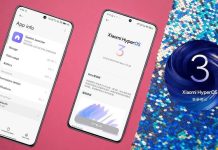In a surprise move ahead of its much-anticipated Google I/O 2025 event, Google took center stage at The Android Show: I/O Edition to showcase a major evolution across its entire Android ecosystem. From the upcoming Android 16 to a reimagined smartwatch experience in Wear OS 6, Google’s next-generation AI assistant Gemini, and the all-new Find Hub, the company made it clear that the future of Android is here—and smarter than ever.
Let’s dive deep into all the major announcements, design upgrades, AI integrations, and ecosystem enhancements that were unveiled.

Android 16 with Material 3 Expressive: The Biggest Design Leap Yet
Material 3 Expressive: Beyond “Material You”
Android 16 marks a significant design overhaul, powered by Material 3 Expressive, a visual and functional evolution of the much-loved Material You. While Material You focused on dynamic color theming based on user preferences, Material 3 Expressive emphasizes personalization, fluidity, tactile feedback, and AI-driven interface elements.
Key Personalization Features in Android 16
-
Expanded Color Palettes: Users can now choose from more vibrant and subtle system-wide themes that extend to app icons, widgets, and notifications.
-
Custom Font Control: For the first time, Android users can independently adjust system fonts without changing the entire theme.
-
Dynamic Animations: Smooth scrolling, seamless app switching, and polished transitions create a more immersive experience.
-
Tactile Haptics: Subtle vibrations accompany gestures like app switching and menu navigation, adding a layer of physical feedback.
Smarter Home Screens with AI-Driven Smart Grids
Android 16 introduces Smart Grids, powered by on-device AI. This new layout automatically rearranges apps based on usage patterns, placing your most-used tools at your fingertips.
Interactive Widgets for Efficiency
Widgets now offer deeper interactivity:
-
Control music playback without opening an app
-
Check calendar events
-
Manage smart home devices
-
Preview messages and calls
Live Updates: Priority Notifications in Real Time
One of the most practical features introduced is Live Updates, a re-engineered notification system that places time-sensitive alerts like rideshares, food deliveries, and navigation directions at the forefront. These updates remain pinned to the lock screen, ensuring nothing critical gets buried.
Wear OS 6: A More Fluid, Smarter Watch Experience
Google also rolled out Wear OS 6, its most advanced smartwatch operating system yet, redesigned for efficiency, battery performance, and personalization.
What’s New in Wear OS 6?
-
Material 3 Expressive Interface: A cleaner, more dynamic UI tailored for circular smartwatch displays.
-
Improved Battery Life: A 10% boost in endurance helps wearables last longer through the day.
-
Advanced Haptics: Subtle wrist feedback for notifications and interactions.
-
Smarter Layouts: Intuitive gesture-based navigation and better glanceability.
Gemini AI Takes the Lead on Wearables
Replacing Google Assistant, Gemini AI now powers voice interactions on Wear OS 6, offering a more natural and contextual conversation model. Tasks such as setting reminders, navigating routes, or replying to messages can now be done with more nuance and less repetition.
Gemini AI: Expanding Across Android’s Entire Ecosystem
Beyond wearables, Google is expanding Gemini AI across multiple platforms:
Android Auto: Voice-First Driving Assistant
-
Hands-free navigation
-
Real-time traffic updates
-
Voice-based discovery for nearby services
Google TV: Personalized Content Discovery
-
Ask Gemini to find movies or explain plot summaries.
-
Get actor trivia or upcoming episode alerts, all via voice.
Android XR: A Glimpse into the Future
Google teased that Gemini will be central to its mixed reality ambitions, hinting at contextual, conversational AI experiences in AR and VR environments.
Find Hub: The Next Evolution of Find My Device
In a strategic rebrand, Find My Device becomes Find Hub, introducing smarter, more connected tracking.
New Capabilities in Find Hub
-
Support for Smart Luggage via brands like July
-
Themed Bluetooth Tags from Disney
-
Ultra-Wideband (UWB) Technology for pinpoint accuracy
Google also hinted at partnerships with airlines, potentially allowing real-time luggage tracking integrated with airport systems.
Google I/O 2025: What’s Still to Come?
While The Android Show gave us a detailed preview, Google promises deeper dives at Google I/O 2025 on May 20. We expect:
-
More on Android XR
-
Android 16 beta release details
-
Full rollout timelines for Wear OS 6 and Find Hub
-
Expanded Gemini AI capabilities
Frequently Asked Questions:
Q1: What is Material 3 Expressive in Android 16?
A: Material 3 Expressive is the next-gen design language in Android 16, offering enhanced color personalization, dynamic animations, and tactile interactions.
Q2: How is Gemini AI different from Google Assistant?
A: Gemini AI uses conversational AI to offer more natural, context-aware voice interactions across Android devices, including Wear OS, Auto, and TV.
Q3: Will older devices get Android 16?
A: Device eligibility depends on the manufacturer. Flagship models from 2023–2024 are expected to receive Android 16 in phased rollouts.
Q4: Is Find Hub available globally?
A: Google is rolling out Find Hub initially in select regions, with global expansion planned. Integration with airline systems is currently in progress.
Q5: What is the release date for Google I/O 2025?
A: Google I/O 2025 is scheduled for May 20, 2025, where more details about Android 16, XR, and AI expansion are expected.




